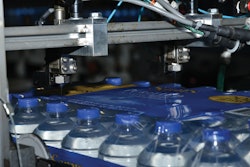
What do you think is in the offing for packaging in 2014? Here are six observations and developments we expect to take place (or not) this year. Whether you agree or disagree, we invite you to email us your thoughts.
1. Flexibles rule! Recent data suggest that this could be the year when flexible packaging becomes the containment format and packaging process of choice for the primary packaging of a broadening range of food, personal care, and pharmaceutical products. “Americans,” says international researcher Canadean, “will be using (32.85 billion) more rigid plastic and flexible packs in 2017 than they were in 2012, making these the fastest-growing segments in the U.S. packaging industry.” Freedonia expects U.S. demand for converted flexible packaging “to rise 3.5% annually to more than $21 billion in 2017,” or 9.1 billion pounds, by 2017. This flexible packaging market growth, in turn, will stimulate development of new, flexible-specific protective secondary and tertiary packaging designs and machinery advances that are likely to accelerate the further shift to flexible packaging.
2. RRP advances. Watch for others to follow Tillamook County Creamery Association’s lead into stand-up pouches for shredded cheese. The move out of peg-displayed pillow pouches by cheese shredders will transform supermarket dairy cases into a more European (i.e., “pegless”) model. This will be cheered by retailers for whom in-store replenishment of peg-pouched refrigerated cheeses is one of the more time-consuming and costly stocking operations. These retailers have been pushing for Retail Ready Packaging (RRP) for the category for some time.
3. Fewer one-trick ponies. If only by broadening the definition of “smart” or “intelligent” packaging to encompass examples that do more than simply contain product, 2014 will see the development and adoption of more data-delivering, interactive packages. Time/temperature indicators, regimen-compliance indicators, near field communications (NFC), freshness/efficacy monitors are among the brainier packaging ideas already on shelves, in development or just this side of the 2015 horizon.
4. The year of biopolymer packaging? Not yet. Expect economics and performance shortfalls vs. petrochemical polymers to slow the advance of bio-derived polymers for packaging. High profile, headline-generating developments such as Coke’s biopet bottle initiative aside, biopolymers will continue to play a niche role on the packaging stage for now. Packaging probably doesn’t come into clearer focus for bio-derived polymers until around 2020.
5. Leveraging technology. Five years ago, a group of scientists and US regulators met at the Wilson Center in Washington, DC, to discuss nanotechnology and the packaging health and safety implications of engineered nanomaterials (ENMs) that are minuscule enough to migrate through barrier membranes that couldn’t be penetrated by larger materials. Nanomaterial applications have quietly expanded since then. This year we could see nanomaterials replacing foil in the classic paper/poly/foil structure to improve recycling and sustainability.
6. Beefing up for e-commerce and m-commerce. We don’t expect Jeff Bezos’ idea of drone-delivered parcels to take flight this year. But the explosive growth of consumer online and mobile transactions is going to trigger a surge of protective packaging to meet the more demanding, higher package-to-product ratio needs of single items traveling by USPS or carrier vs. conventional pallet load transport packaging of goods to brick and mortar retailers. You’ll have to go through a lot more protective packaging to enjoy your subscription to Nibblr snacks from General Mills than you would for an equivalent amount of store-bought GMI goodies.
Got other ideas about what’s more likely to have a significant impact on packaging this year? Tell us what you think.


























